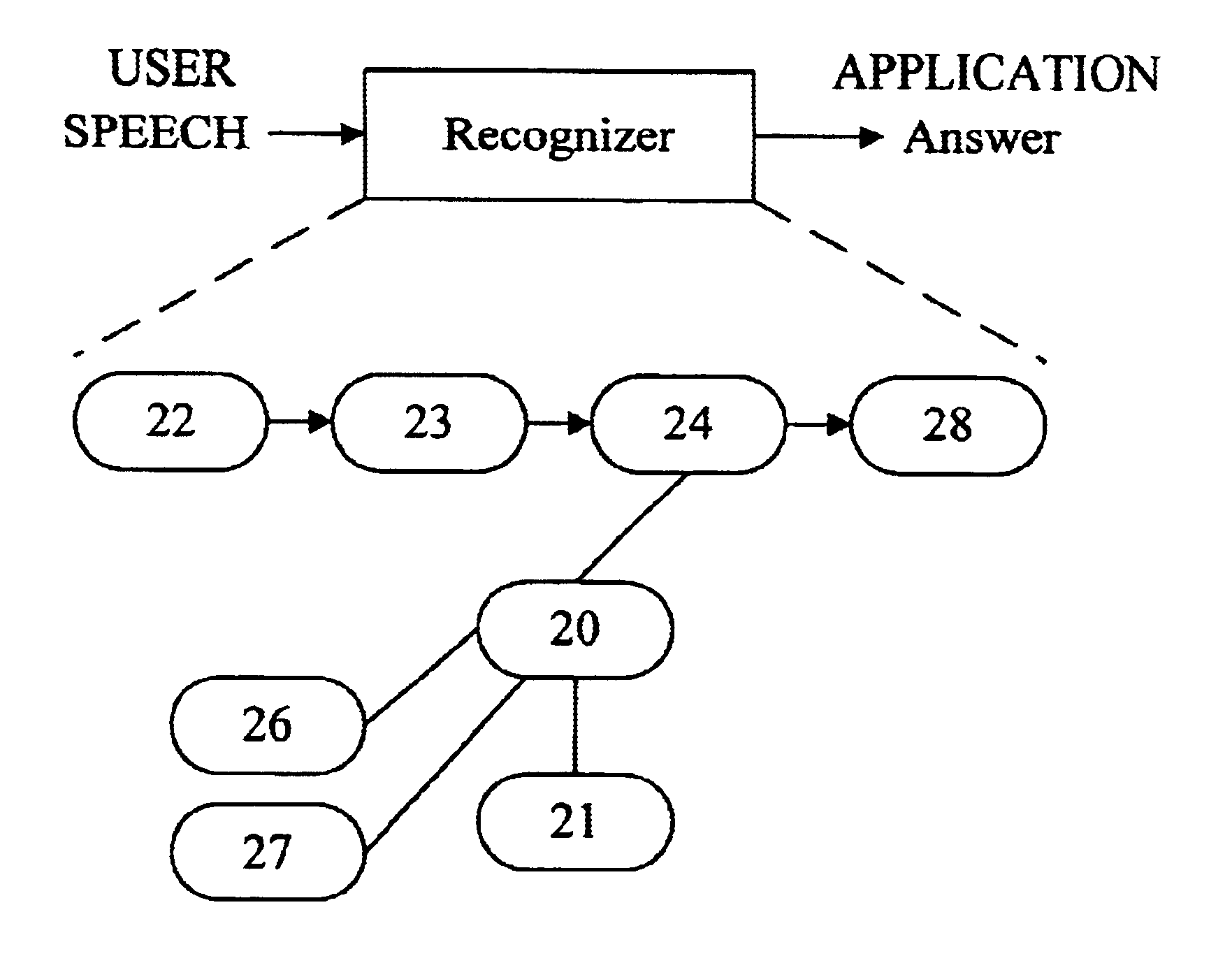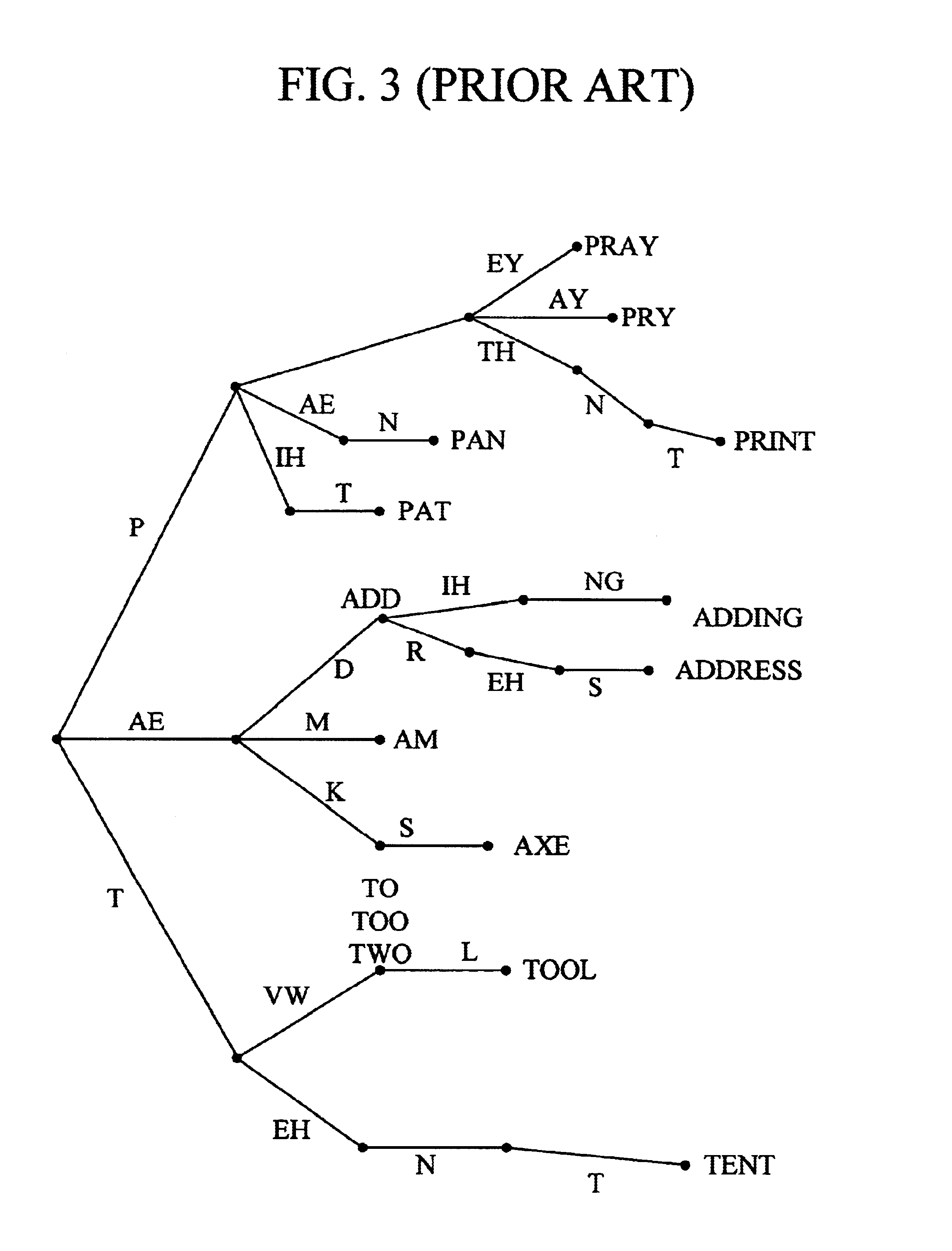Network and language models for use in a speech recognition system
- Summary
- Abstract
- Description
- Claims
- Application Information
AI Technical Summary
Benefits of technology
Problems solved by technology
Method used
Image
Examples
Embodiment Construction
Referring to FIG. 1 the relationships between a received signal, observations based thereon, and an HMM network is shown. Its structure is similar to that described in the introduction above, with an entry node 1 and exit node n, with states 2 . . . 4 in between that, as a group, may represent a single phone or phones.
FIG. 2 shows how a simple prior art network model is constructed from individual HMMs to produce individual words. Included in the network are word end nodes 10 indicating that a word has been recognised.
FIG. 3 shows a known tree structured network described in U.S. Pat. No. 5,621,859. In this model, within word triphone models are employed and a single tree used with approximate language model probabilities. With such an arrangement the exact language model (for a bigram) is unknown until the end of the word has been reached and depends upon the previous word. With such an arrangement it is possible to approximate within-word triphone nodes to reduce the computation r...
PUM
 Login to View More
Login to View More Abstract
Description
Claims
Application Information
 Login to View More
Login to View More - R&D
- Intellectual Property
- Life Sciences
- Materials
- Tech Scout
- Unparalleled Data Quality
- Higher Quality Content
- 60% Fewer Hallucinations
Browse by: Latest US Patents, China's latest patents, Technical Efficacy Thesaurus, Application Domain, Technology Topic, Popular Technical Reports.
© 2025 PatSnap. All rights reserved.Legal|Privacy policy|Modern Slavery Act Transparency Statement|Sitemap|About US| Contact US: help@patsnap.com



